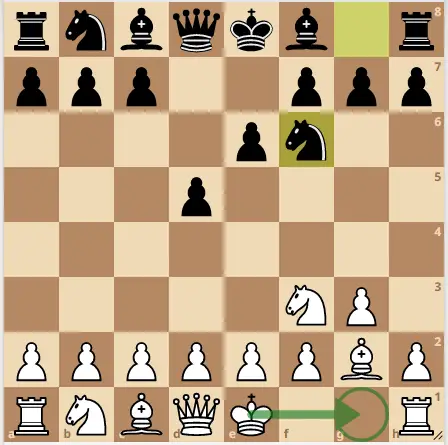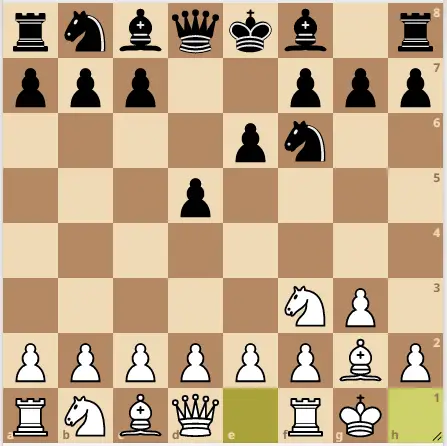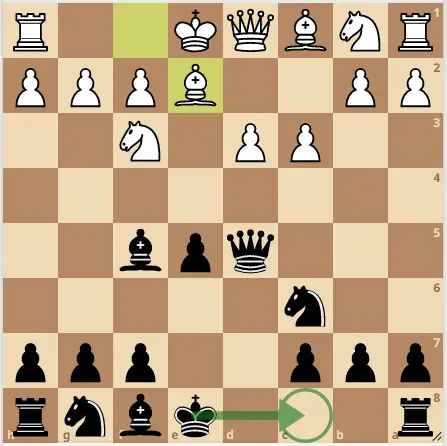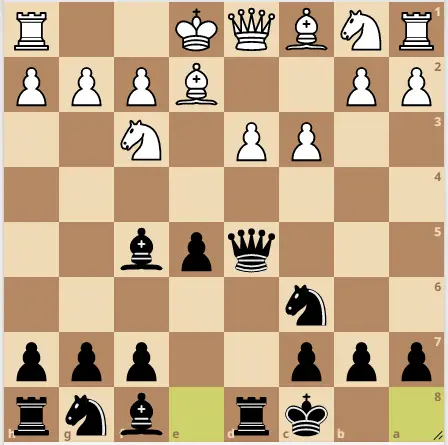The purpose of castling is to keep you king safe. You can either castle long or short depending on the nature of the position. In the opening phase of the game, you should prioritize castling as the king is safely tucked closer to the corner of the board than in the center.
One common question asked by many beginners is “How many times can you castle in chess?”
In this article, we will answer that question and give you some helpful tips on when to castle in chess. Read on to find out more.
How Many Times Can You Castle In Chess?
Castling is a special move in chess that only occurs once. Therefore, you can only castle one time in chess. If you castle kingside, then you can never castle again. Conversely, if you castle queenside then you are not allowed to castle once more for the rest of the game.
Why Can’t You Castle More Than Once?
Castling more than once is prohibited under the FIDE rules of chess. Moreover, it wouldn’t make sense to castle again because your king would already be in its castling position.
However, you can castle a second time in an artificial manner. For example, if you’ve castled kingside but your opponent’s pieces are attacking that side of the board, then you may see the need to rush your king over to the queenside such that the king ends up on the c1 square as if it were long castled in the regular fashion.
It’s important to note that this type of manoeuvre is often successful only in closed positions where time is not a factor and your opponent cannot open up the center of the board. We will discuss queenside castling further in the article.
You can find out more about artificial castling here.
So how do you castle in chess? Follow these simple rules to master castling in no time:
How To Castle In Chess?
There are 2 types of castling, long castle also known as queenside castling, and short castle also known as kingside castling.
Short Castle
The most common form of castling is kingside because it is faster to achieve, and offers more safety for your king. It’s also the classical way of playing chess. To castle kingside, move your king 2 squares closer to the rook in the corner, then jump your rook over the king such that it lands beside it on the f1 square for white or the f8 square for black.
In the following position, white can castle kingside immediately.
The king move 2 squares to the rook as indicated by the arrow

Final position after castling

Notice how quickly white was able to castle and safeguard his king. This is called Fianchetto; an opening strategy that quickly allows you to develop your kingside pieces and castle early. This strategy is common in openings like the King’s Indian Attack, the King’s Indian Defense, the Pirc Defense among many others.
The king is also well protected in this type of castling position. The fianchettoed bishop covers the light squares around the king. Meanwhile, the f, g and h pawns act as a shelter for the white king. The knight on f3 also helps defend over the h2 square. All in all, white has a sound defense.
Castling Long
The strategy of castling long is similar to that of short castle. Move your king 2 squares towards the rook in the corner and jump the rook over the king such that it lands beside it on the d1 square for white or the d8 square for black.
Before castling long

After castling long

The differnce between long castle and short castle is that the king is farther away from the corner of the board in queenside castle than in kingside castle.
This creates a weak flank pawn as shown in the above position. In a lot of cases, Black would have to expel a tempo moving his king one step closer to the corner in order to add protection over the undefended a-pawn.
However, for kingside castle, you don’t need to sidestep your king and waste time because it already defends the flank pawn in one move.
Nevertheless, castling long can be an effective strategy for attacking your opponent. Because your king is safely put away on the queenside, you can use your kingside pawns to launch an attack up the board against the enemy king. This is known as a pawn storm and is common in Sicilian openings like the Yugoslav attack.
Even in our last position above, black intends to launch a pawn storm against the white king with the moves f6, g5, h5.
Long castle to launch pawn storms on the kingside

The Conditions For Castling Long Or Short
A few conditions must be met in order to legally execute the castling move in chess. First and foremost, there must be no pieces between the king and rook. The path must be cleared from your pieces or your opponent’s pieces such that the king can freely move to the castling square.
Secondly, you cannot castle if you had already moved your king or rook before. The third condition is that there must be no enemy pieces controlling the path to which the king castles. Therefore, if a bishop slices through/control the squares to which the king castles, then you are not allowed to castle through the endangered square.
Lastly, you cannot castle out of check. Either you block the check, move your king, or eliminate the piece delivering check.
Here are some useful articles if you want to learn more about the conditions for castling:
Final Verdict
Castling is the only move in chess that allows you to move 2 pieces in one move. You only get to castle one time so you should make the most use of it. As a general guideline for beginners, you should castle when you get the chance. Don’t delay castling or else your king could get blown off from the center of the board!


